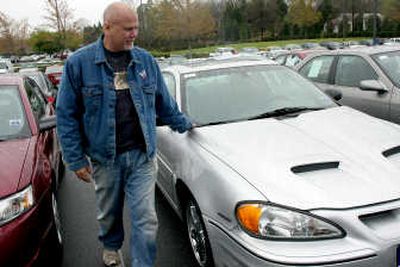Demand for smaller cars rising alongside fuel prices

DETROIT – Scott Piechocinski roamed the rows of a CarMax dealership in Charlotte, N.C., on a recent afternoon, searching for something small to replace his son’s 2001 Nissan Pathfinder sport utility vehicle.
He’s not alone: As gas prices march higher and now top $3.50 per gallon across the nation, car buyers across the country increasingly are abandoning SUVs and pickups in favor of smaller crossovers and cars.
“Fuel is money,” Piechocinski said. “You have to be realistic.”
Small cars are now the largest segment of the U.S. auto market, accounting for 18 percent of new car sales. Last year U.S. consumers bought a record 2.8 million of them, and with sales up 4 percent in the first quarter this year, the record almost surely will be shattered.
In the U.S., gasoline prices are driving the small car boom, but worldwide, it’s people in emerging economies gaining wealth, said Mike DiGiovanni, GM’s executive director of global markets and industry analysis.
“A middle class is starting to develop, and they’re trying to move up scale from smaller cars to the larger compact-size cars,” he said.
U.S. buyers, even when they pick larger cars, are going for more fuel-efficient engines.
Six-cylinder engines used to command the lion’s share of the market, but 38 percent of buyers sought four-cylinder engines in the first quarter, the highest since Westlake Village, Calif.-based marketing and consulting firm J.D. Power and Associates began collecting such data in 2002.
That directly affects automakers’ bottom lines: A large vehicle with a V-8 engine can command $8,000 more than one with a 6-cylinder, in part because additional luxury features are often packaged with the larger engine, according to J.D. Power auto analyst Jason Rothkop.
By comparison, there is a discount of $4,000 when a buyer moves down from a 6-cylinder to a 4-cylinder.